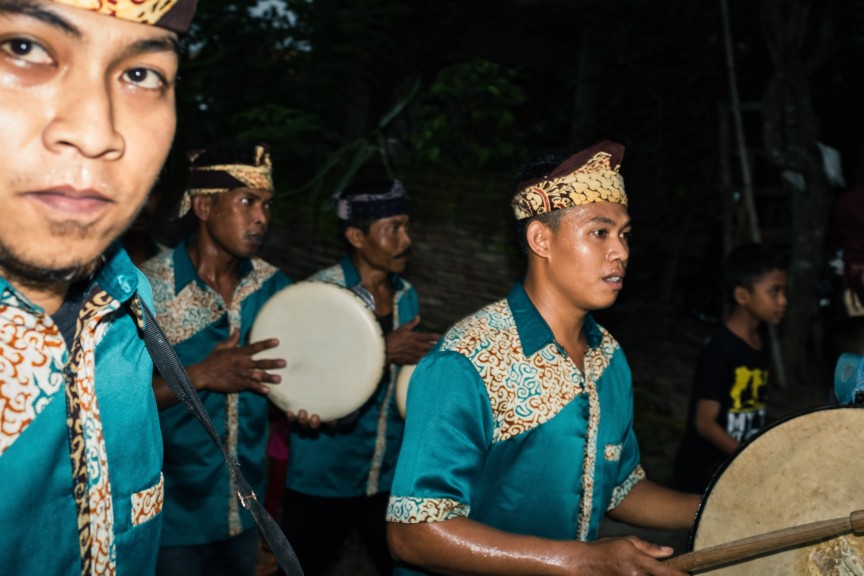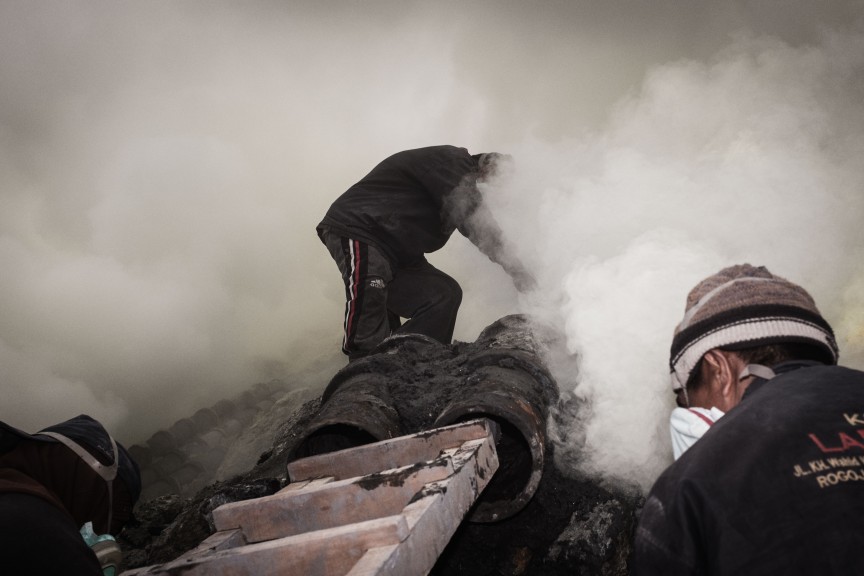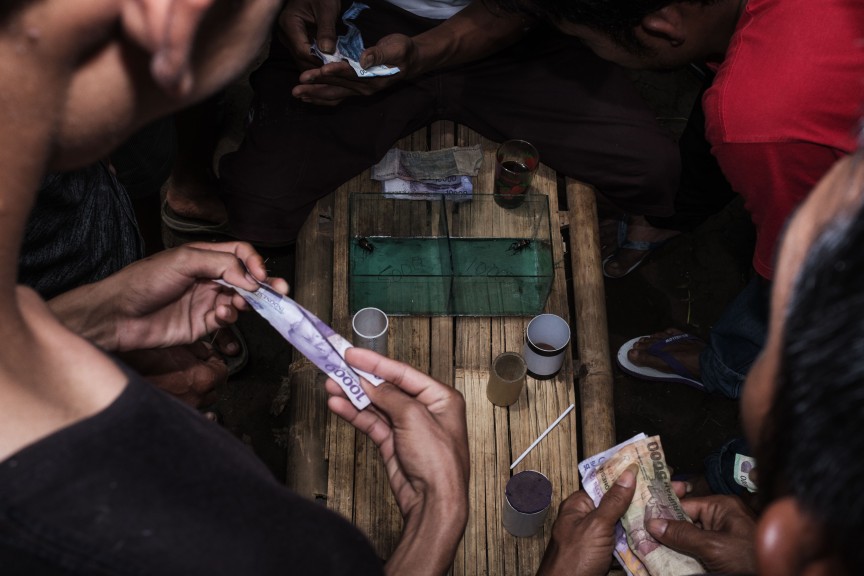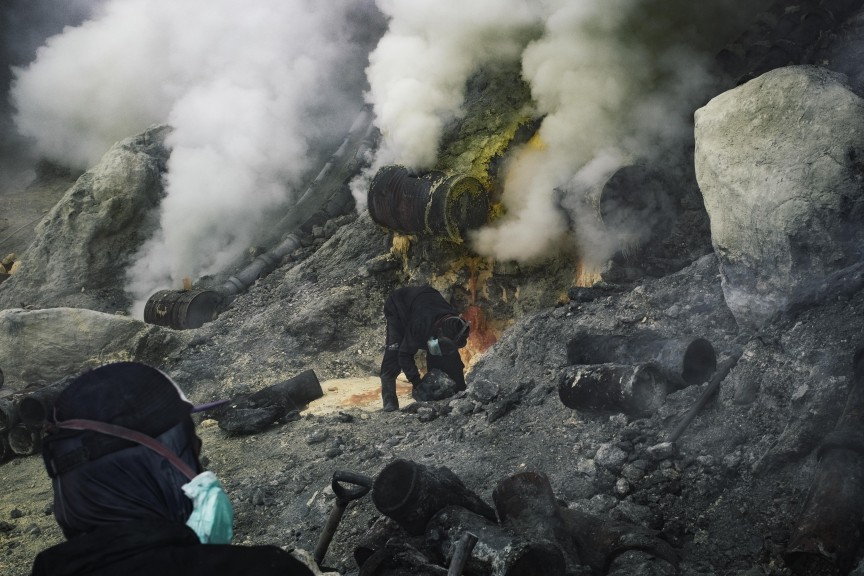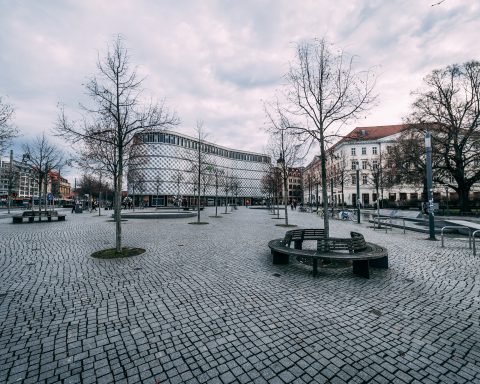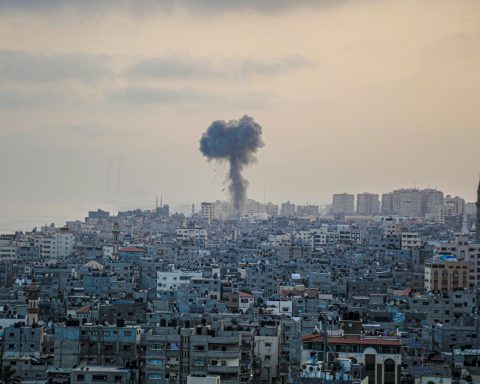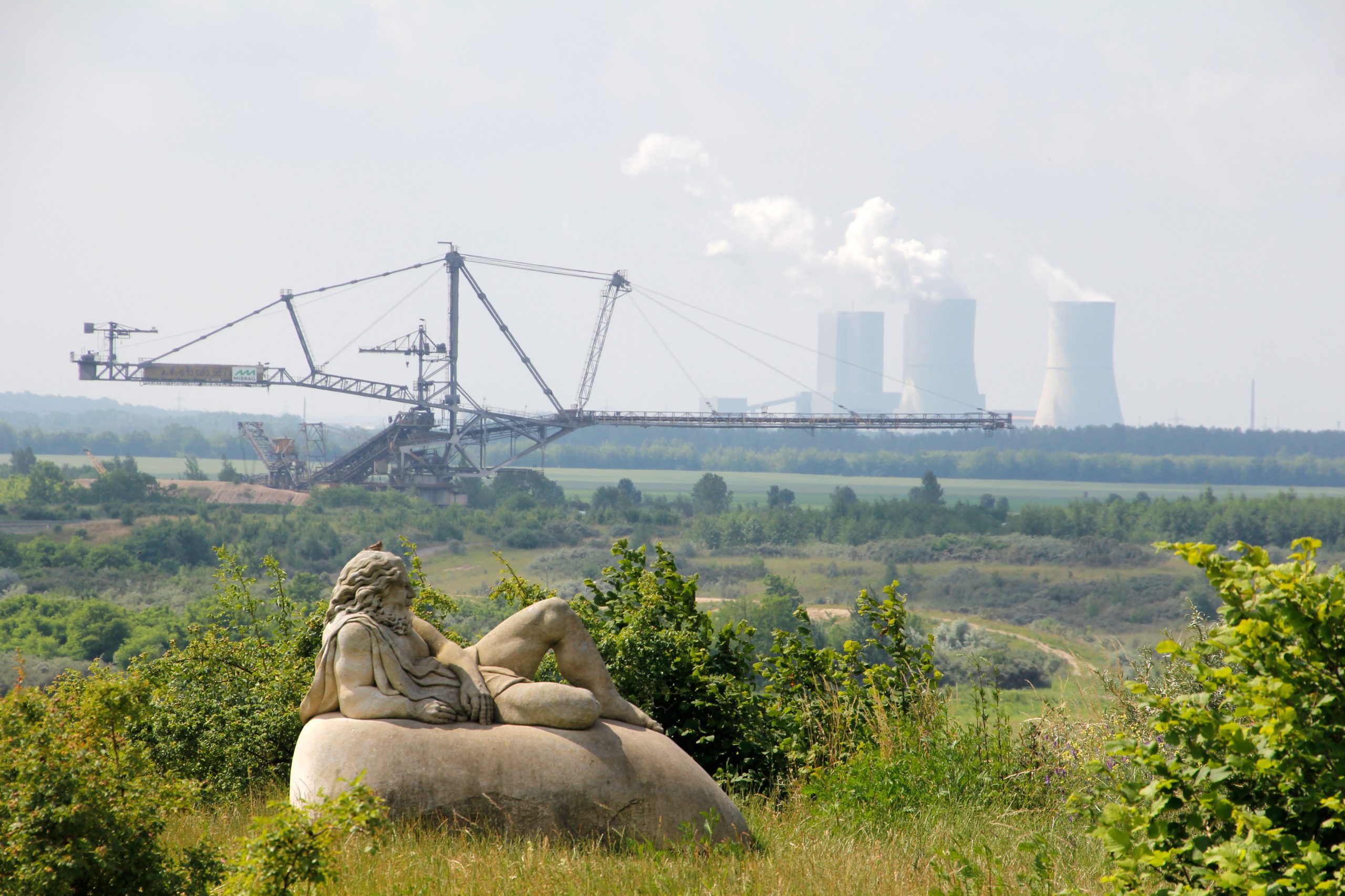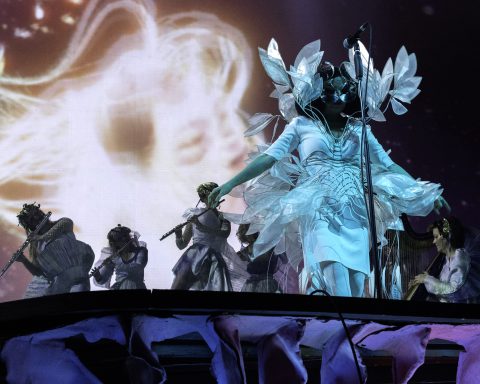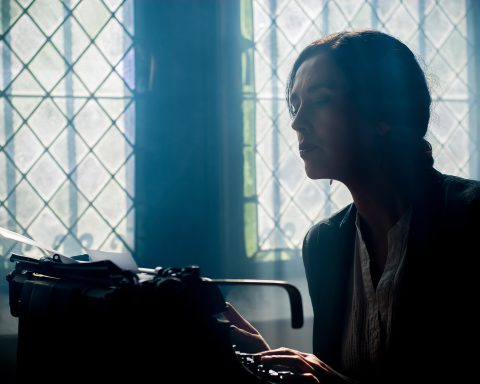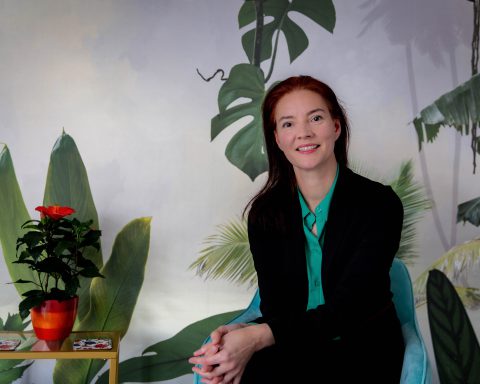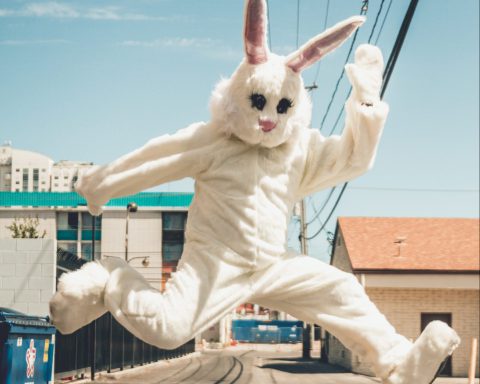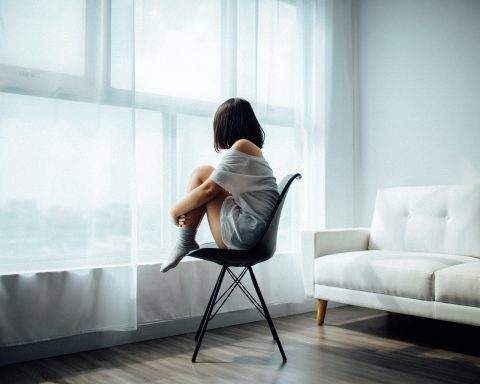We have found mining to be a topic of interest among our readers, and have received fascinating stories somehow related to the practice. This weekend, we will run two of them. Here in Part I, a passionate street photographer from Berlin tells us about leaving a job that wasn’t fulfilling him, to travel through Southeast Asia. During that time, he stayed in the Indonesian jungle for roughly 6 weeks, to photograph the sulfur miners of Mount Ijen. His stay there had a tighter hold on him than he would’ve thought.
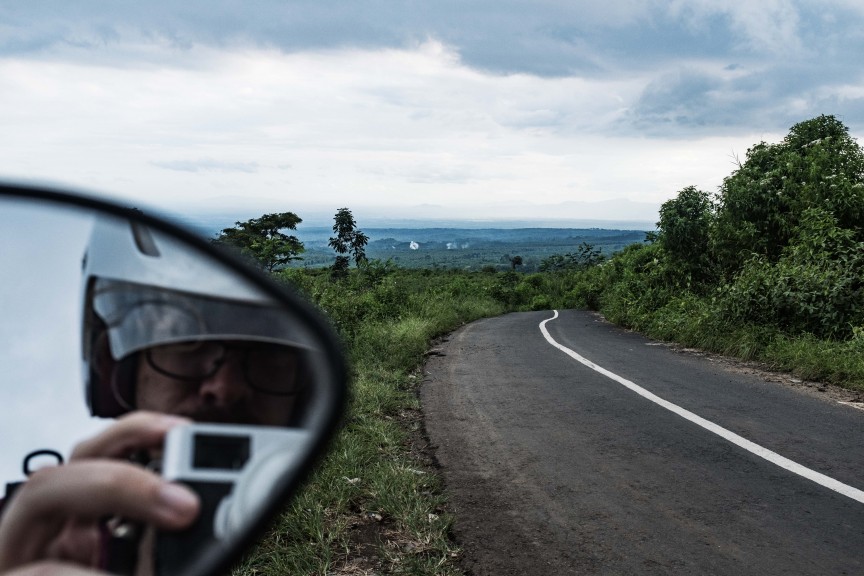
Who doesn’t dream of leaving their 9 to 5 job and escaping their current life for some adventures abroad? Well, I wasn’t happy with the job I had, and since I wasn’t able to travel much, I figured it was about time to save up all my salary for a trip to Southeast Asia, which would last more than 3 months and fundamentally alter my life.
It all started when I first heard of the Indonesian “blue fire.”
Every evening during the high season, this spectacle draws in more than a hundred tourists who are willing to sacrifice a night of sleep to go hiking at Mount Ijen and witness this special fire. Personally, I don’t value this sort of touristic event very highly; when I travel, I am more interested in experiencing the real life of the locals.
Luckily enough though, by discovering this fire, I noticed that Mount Ijen had much more to offer. The Ijen is a volcano crater in East Java, and the fire is a result of the sulfur gas coming out.
During the night, this sulfur gas becomes visible in the form of the “blue fire.”
During the day, the volcano crater is filled with Indonesian workers who are mining for sulfur.
With their body strength, they carry up to 70 kilograms of sulfur on their back and up to the edge of the volcano crater. The more I read about it, the clearer it became to me that this has got to be one of the most dangerous jobs in the world.
My curiosity forced me to take a trip to Ijen, to document their work with my camera.
Since my plan was to visit the Indonesian mountain for a few times and the nearest city is more than 2 hours away, I decided to stay in a small village that is much closer. The small village is only 45 minutes away, and some of the miners lived there. However, nowadays tourism is becoming more important, and instead of mining, some people are providing space at their homes to tourists who want to stay overnight.
Being there for about 6 weeks is very unusual, but I found it interesting to also know a little more about the life in the village – and I can already tell you that the trip didn’t fall short in stories.
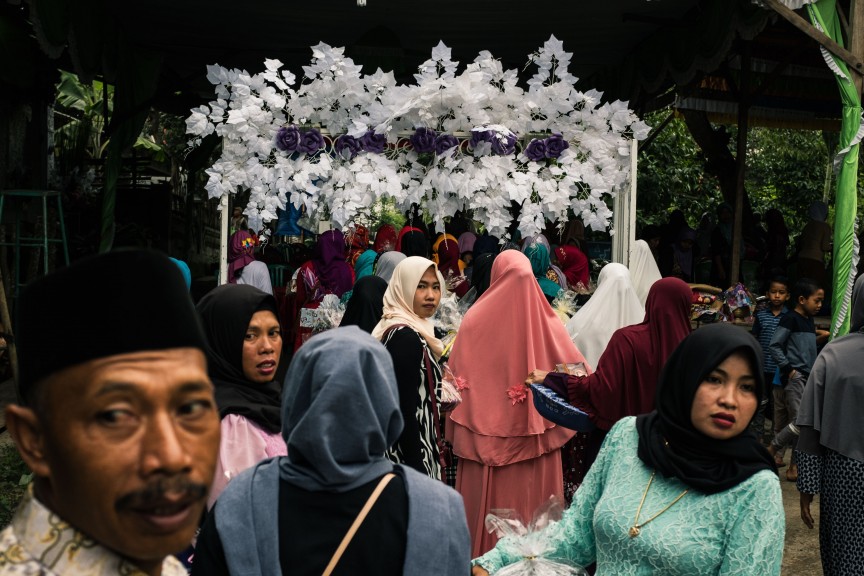
After I arrived, my guest family invited me to visit the wedding of their cousin in a small neighboring village. So there I was after a night of sleep, photographing a traditional wedding with more than 300 guests. It was a great experience, and unfortunately, weddings like these are a dying tradition because more Indonesian people are deciding to go live in the city.
In addition to the wedding, I experienced very closely how the day to day life in the village was.
To my surprise, the Internet was pretty good and when it didn’t rain, the mobile Internet was quite sufficient. In contrast, when it was raining, the power went off most of the time and so did the Internet.
Since it gets dark at around 5 pm, there wasn’t much to do during the rain. So life does follow the natural cycle very strictly, and people get up very early, to use as much light as possible.
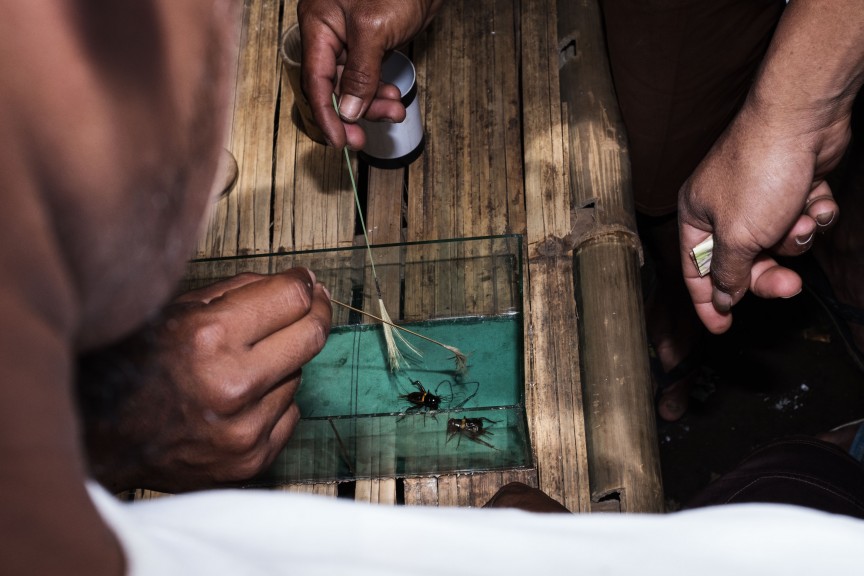
When it didn’t rain in the afternoon, I played volleyball with the locals or spectated how they would bet on cricket fights. Although I didn’t understand how those “fights” were being played, it was still quite the experience.
The real highlight of this Indonesian trip was, of course, the visit to Mount Ijen during the daytime. It was the rainy season, so I was not blessed with sunlight, but at least the rain would only start in the afternoon.
After a 45-minute drive with my scooter, the hike to the edge of the volcano only took around an hour. However, the hike is not the easiest, and does include some very steep slopes.
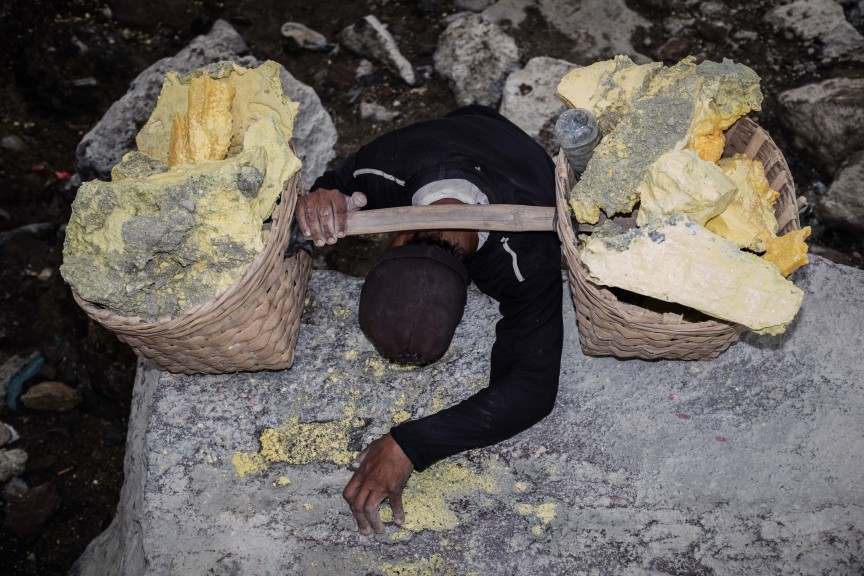
On the way to the volcano crater, there are already sulfur miners going down with their daily yield of around 200 kilograms.
As I mentioned earlier, the miners can carry around 70 kilograms each way. So this means that they take the hike to the edge of the volcano crater up to 3 times a day.
After I finally arrived at the edge myself, I was only halfway to my final destination, which should be the mining side of the sulfur. Going down the crater takes around 30 minutes, but can be really exhausting. There are no fences or any other security measures, and I was strictly following the path my guide had chosen.
During all of that, I was taking pictures of the miners and this unreal landscape. If the photography nerds care to know, I was using a FujiX100F for all those pictures with a flash, to make the miners stand out a little bit more. I know that a lot of photographers are contemplating which camera they should take on their trip, and I definitely recommend the X100F – to me, this is one of the best travel cameras you can choose.

Once I approached the mining side, it was time to put on the gas mask. The sulfur smoke was getting more intense, and if you have no experience with this gas, I just want to mention that it is very toxic and can irritate your eyes as well as burn your lungs. That’s why my guide was only confident in letting me get close to the mining side for 5 minutes.
At first I wouldn’t believe him. I thought that it would be no problem to be there, and wanted to take pictures for a longer time. But after 15 minutes, I felt very dizzy, and the camera work did become a strain. If you want to take pictures in that kind of environment, I would recommend turning to an inexpensive mirrorless camera, since it may take damage from the smoke.
Of course, the miners are there for a lot longer, and doing hard manual labor. Even when not standing directly in the smoke, they are carrying the sulfur or doing other heavy tasks.
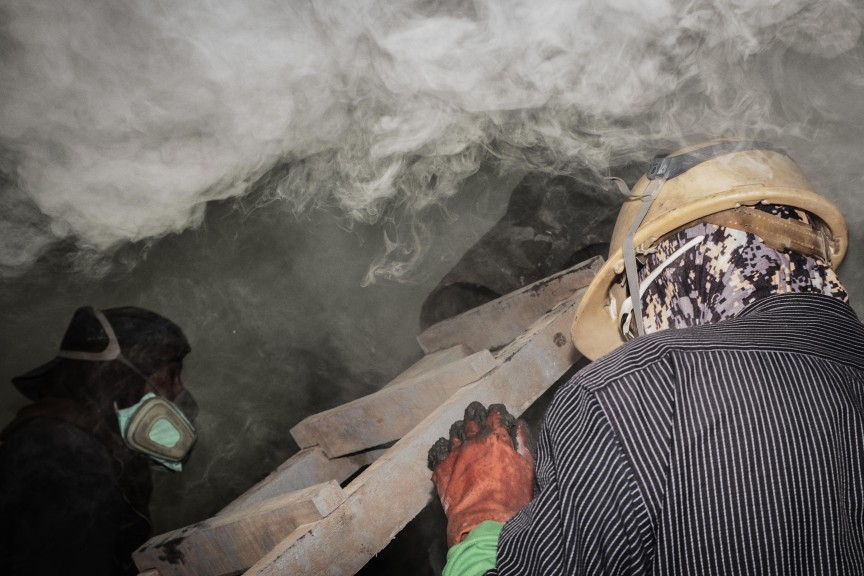
This is why mining, to me, is one of the most dangerous and also hardest jobs in the world.
All the risk they are taking is worth around $600 a month for them. It might not sound like a lot, but the minimum wage there is around $200, so it is a relatively well paying job for anybody without a certain level of education.
Nonetheless, some of the miners are more than 70 years old, and they work until their body cannot carry them anymore.
Seeing the miners and living closely with the family in the jungle was, of course, a life-changing experience for me.
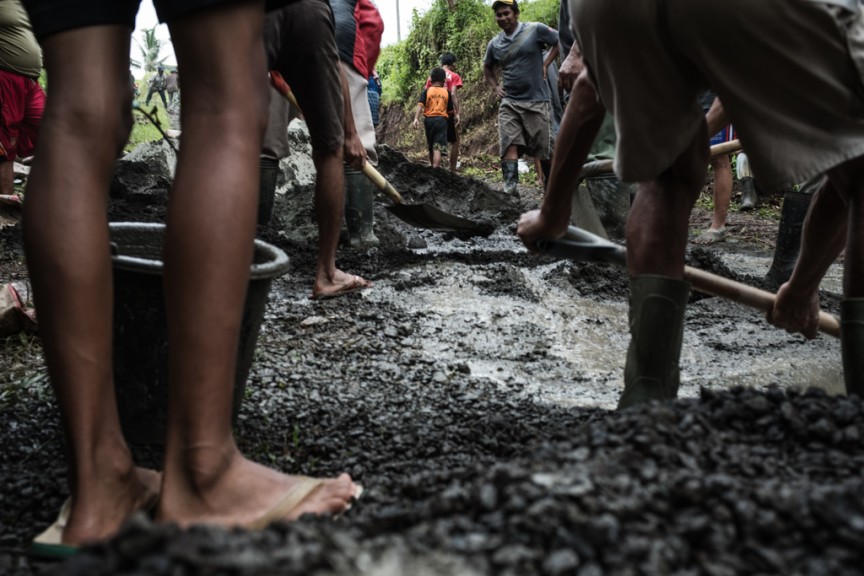
Without explaining the mindset too deeply, I learned to appreciate other things in life more. To see how much work it takes to produce the rice made me appreciate the abundance of food that I had during the homestay. Although these Indonesian families are not living very prosperously, they still share their meals, and were very welcoming to me.
For them, other things are more valuable, like community ties, family and friendship. They don’t get any support from the government, which is why they build the infrastructure and roads themselves.
When playing volleyball with them, I asked them when they would finish the warm-up and start to play against each other. But the idea of playing against each other didn’t occur to them, and they wouldn’t hold any competitions within their own community. They value a harmonic community more highly, and this was something that I needed to learn at first, coming from a competitive environment where winning was always the highest priority.
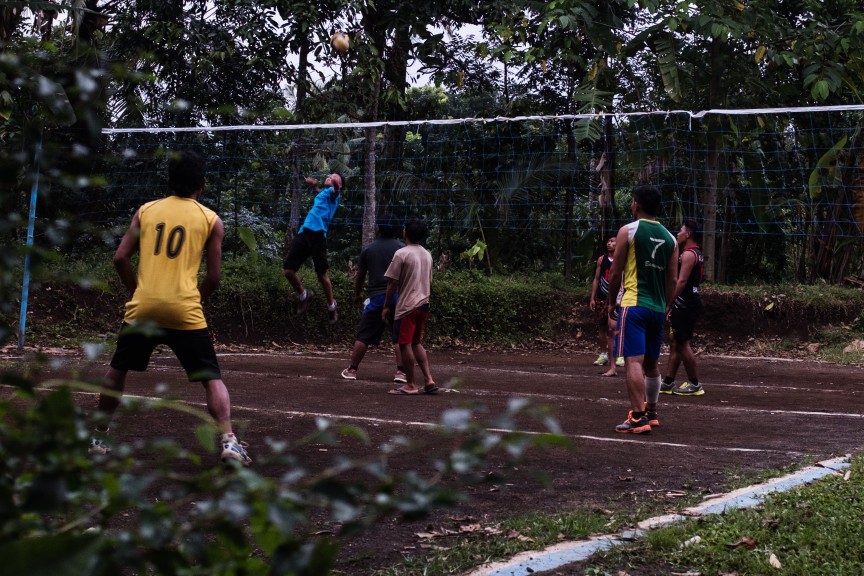
Since then, I have been living in a small Indonesian town, in central Java, and enjoy this different take on life.
By Sebastian Jacobitz
Sebastian Jacobitz is a street photographer from Berlin, currently living in central Java. In 2015, he became interested in street photography, and started photographing the streets of Berlin. He then felt the urge to explore the world and went on an adventure to Southeast Asia in 2017, including Vietnam, Indonesia and Thailand. His focus has shifted to a more photojournalistic approach, and he likes to tell complete stories now. He shares these stories and experiences regularly on his blog, Streetbounty.com.


